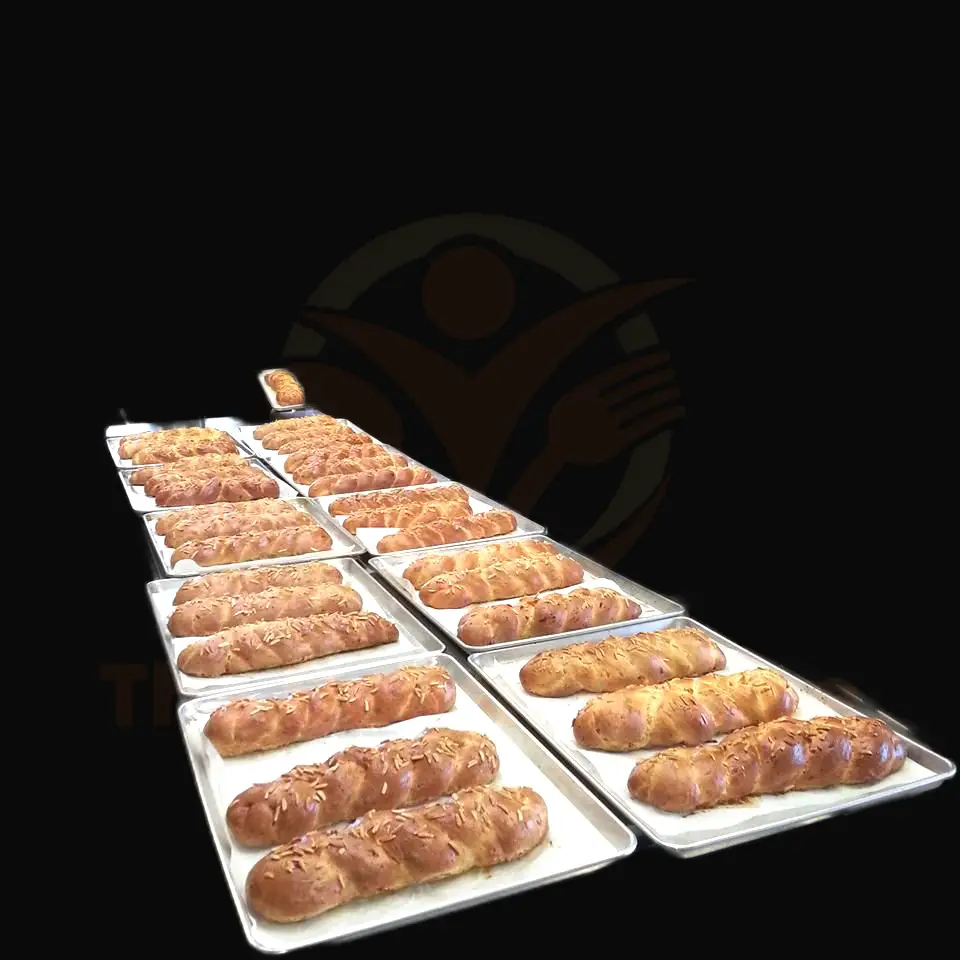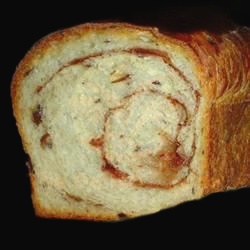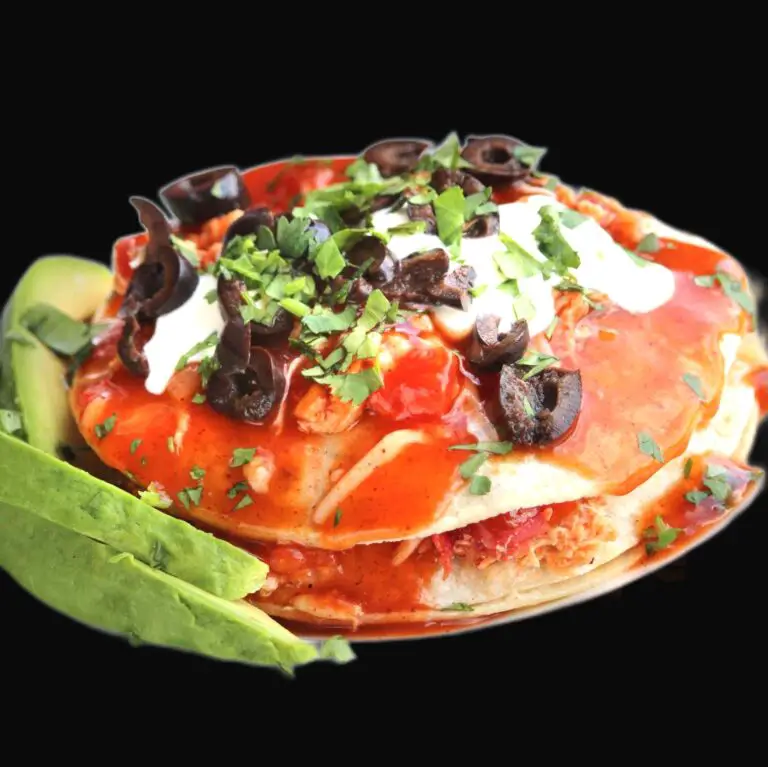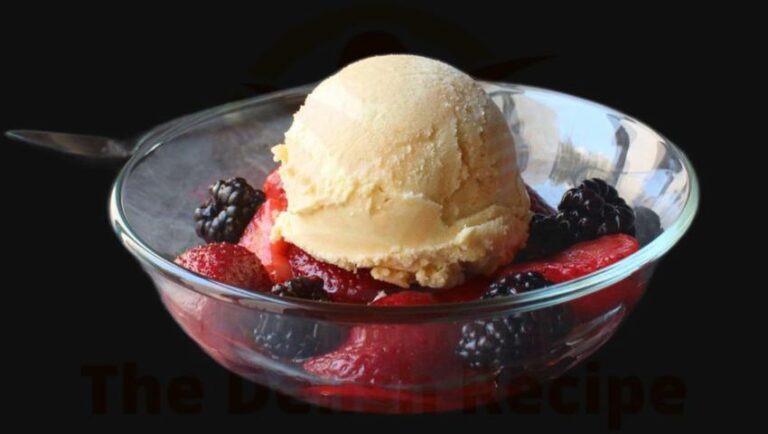Tsoureki Recipe: Delicious Greek Easter Bread
I’m so excited to share with you my recipe for tsoureki, the traditional Greek Easter bread! I’ve been making this sweet, rich, and flavorful bread for years, and it’s always a hit with my family and friends. Every time I make it, I’m reminded of the wonderful holidays I’ve spent in Greece, surrounded by the…
I’m so excited to share with you my recipe for tsoureki, the traditional Greek Easter bread! I’ve been making this sweet, rich, and flavorful bread for years, and it’s always a hit with my family and friends. Every time I make it, I’m reminded of the wonderful holidays I’ve spent in Greece, surrounded by the aromas of tsoureki and the sounds of laughter and celebration. I hope you enjoy making and eating this delicious, comforting bread as much as I do!
Tsoureki (Greek Easter Bread) Recipe
Prep Time
180 mins
Cook Time
120 mins
Additional Time
300 mins
Total Time
600 mins
Servings
3 servings

Ingredients
- 5 ½ cups all-purpose flour
- 1 ½ teaspoons active dry yeast
- 1 teaspoon sugar
- 1 teaspoon salt
- 1 ½ cups lukewarm milk
- ¾ cup sugar
- ¾ cup butter, melted
- 3 eggs, beaten
- 1 teaspoon mahlab
- 2 tablespoons toasted sesame seeds
- 2 tablespoons toasted almonds, chopped
- 2 tablespoons toasted pistachios, chopped
- 2 teaspoons orange zest
- 2 teaspoons lemon zest
- 2 tablespoons brandy or orange juice
- 2 tablespoons honey or rose water
- 2 tablespoons orange blossom water (optional)
Instructions
- Let’s get started on making Tsoureki (Greek Easter Bread)!
- In a large bowl, mix together 5 ½ cups all-purpose flour, 1 ½ teaspoons active dry yeast, 1 teaspoon sugar, and 1 teaspoon salt.
- In a separate bowl, mix together 1 ½ cups lukewarm milk, ¾ cup sugar, ¾ cup melted butter, and 3 beaten eggs.
- Slowly pour the wet ingredients into the dry ingredients, stirring continuously until all of the ingredients are well combined.
- Add 1 teaspoon mahlab, 2 tablespoons toasted sesame seeds, 2 tablespoons chopped toasted almonds, 2 tablespoons chopped toasted pistachios, 2 teaspoons orange zest, 2 teaspoons lemon zest, 2 tablespoons brandy or orange juice, 2 tablespoons honey or rose water, and 2 tablespoons orange blossom water (optional).
- Knead the dough until it is soft and pliable.
- Place the dough in an oiled bowl, cover with a damp cloth, and set aside in a warm place to rise for 3 hours.
- After the dough has doubled in size, shape it into a round or braid it into a loaf.
- Place the dough on a greased baking sheet, cover with a damp cloth, and set aside in a warm place to rise for an additional 2 hours.
- Preheat your oven to 350°F.
- Brush the dough with an egg wash, sprinkle with sesame seeds, and bake for 1 hour and 20 minutes.
- Cool the Tsoureki (Greek Easter Bread) on a wire rack before serving. Enjoy!
Nutrition Facts
- Calories: 800
- Fat: 36g
- Carbohydrates: 97g
- Protein: 20g
- Sodium: 1250mg
- Cholesterol: 150mg
What is tsoureki, and why is it an important part of greek easter celebrations?
You’ve probably heard of Tsoureki. It’s a fragrant, sweet, egg-enriched bread that is a beloved part of the Greek Easter celebrations. It’s a delicious treat that’s been around for centuries, and it’s a hugely important part of Greek Easter.
Tsoureki is made with a special dough that is typically sweetened with orange zest, mahlab, and mastiha. The dough is then shaped into a braid, and the ends are twisted into a spiral. It is then topped with a red egg, which symbolizes the life given by Christ. A Tsoureki is more than just a tasty treat- it is a symbol of faith and celebration.
Tsoureki is an integral part of Greek Easter celebrations. On Easter morning, families will often eat Tsoureki for breakfast, and it is also a customary treat to give to guests who come by to celebrate. Eating Tsoureki on Easter is a symbol of celebration and joy, and it is a wonderful way to share the spirit of the holiday with others.
Tsoureki is a beloved and important part of Greek Easter. It is a beautiful, fragrant, and delicious symbol of faith and celebration, and it is a wonderful way to share the joy and spirit of the holiday with friends and family.
What special ingredients does tsoureki require and how does the combination of those ingredients contribute to its flavor?
Tsoureki, the traditional Greek Easter bread, requires a few special ingredients to give it its special flavor. The combination of these ingredients makes tsoureki a truly unique and delicious treat. The most important ingredients you need for tsoureki are mahlab, mahlepi, and mastika.
Mahlab, a fragrant spice made from the ground pits of wild cherries, adds a subtle hint of almond to the bread. Mahlepi, a powder made from the ground pits of a type of wild cherry, gives the bread a distinctive aroma and flavor. Finally, Mastika, a liqueur made from the resin of a wild Mediterranean tree, contributes a sweet, resinous flavor.
The combination of these three ingredients gives tsoureki its distinctive flavor. The mahlab and mahlepi provide a fragrant aroma, while the mastika adds a sweet, resinous flavor. Together, these ingredients create a complex yet delightful flavor that is truly unique to tsoureki.
Tsoureki is a delicious and special treat, and its unique flavor is thanks to the combination of these special ingredients. If you are looking for a truly special recipe to make this Easter, look no further than tsoureki.
What is the history of tsoureki, and how has it evolved throughout the years?
Tsoureki is an iconic Greek Easter bread with a rich history that has been evolving for centuries. It is a sweet, soft, egg-rich brioche-like bread that is traditionally served as part of the Easter celebrations in Greece. The exact origins of Tsoureki are unknown but it is believed that it dates back to ancient times and has its roots in the ancient Greek celebration of Easter.
In the past, Tsoureki was typically flavored with mahlepi, a spice made from the pit of St. Lucie cherries, and mastic, a resin from a species of evergreen tree. Modern recipes, however, often omit mastic, and instead use other spices such as cinnamon, nutmeg, and orange zest. It is usually decorated with a red-dyed hard-boiled egg and can be shaped into a variety of shapes, such as a round loaf, a spiral, or a braid.
These days, Tsoureki is a beloved traditional treat that is served throughout the Easter season in Greece, as well as in Greek-American communities around the world. Its flavor and texture have evolved over the years. In addition to traditional versions, bakers have also started to experiment with Tsoureki recipes, adding different spices, nuts, and fruits, such as raisins, dates, and figs, to create unique and flavorful variations.
No matter how it is flavored or shaped, Tsoureki remains a beloved tradition that is enjoyed by Greek families around the world. Its rich history, dating back centuries, and its ever-evolving flavor and texture, give it a special place in the hearts of all who celebrate the Easter season.
Are there any special techniques that are used for baking tsoureki?
Yes! There are some special techniques used to make tsoureki, the delicious, braided Greek Easter bread! To get the perfect tsoureki, you’ll need to follow a few steps and use a few tricks.
First off, you’ll need to use a special tsoureki dough. This dough is made with yeast, eggs, butter, sugar, and a special ingredient—mahlepi. Mahlepi is a ground cherry kernel spice that gives the bread its unique flavor. The dough should have a spongy texture, so you may need to add a bit of water.
Once your dough is ready, it’s time to knead it. This is where the special techniques come in. When you knead tsoureki dough, you’ll need to use a special rolling motion that’s similar to kneading challah. Start at the edges and roll them in towards the center, then turn the dough over and repeat. This special rolling motion helps to create the light and fluffy texture that’s so important for tsoureki.
The final step is braiding the dough. You can braid the dough in many different ways to create beautiful shapes. If you want a more traditional braided look, start by splitting the dough into three equal pieces and braid them together. You can also braid the dough in a spiral shape, which is the traditional way to bake tsoureki.
By using the special techniques for kneading and braiding the dough, you can get perfect results every time.
What are some creative ways to enjoy tsoureki, beyond serving it as traditional bread?
You’ve made a delicious batch of tsoureki and you want to enjoy it in all its glory. Sure, it’s traditionally served as a bread, but don’t limit yourself there! Here are some creative and tasty ways to enjoy this Greek Easter treat.
- French Toast- Cut thick slices of tsoureki and dip them into a mixture of beaten eggs and milk, then fry them in butter till golden. Serve with syrup and a sprinkle of cinnamon for a delicious breakfast treat.
- Bread Pudding- Soak your tsoureki in a mixture of milk, eggs, sugar, and spices, then bake it in the oven. Serve with a sprinkle of cinnamon and sugar for a sweet and comforting dessert.
- Strata- Cubes of tsoureki can be used in a savory strata along with eggs, cheese, and vegetables. It’s a great way to use up any leftover tsoureki for a hearty and comforting meal.
- Croutons- Cut tsoureki into cubes and toast in a skillet with butter and spices for a tasty topping for salads or soups.
- French Fries- Cut tsoureki into strips, then deep fry until golden. Serve with a side of ketchup for a unique twist on French fries.
These creative ideas will help you to enjoy tsoureki in all its glory.
Ask your question to our expert chef and get instant help.
Please provide details about your query with the recipe name.





